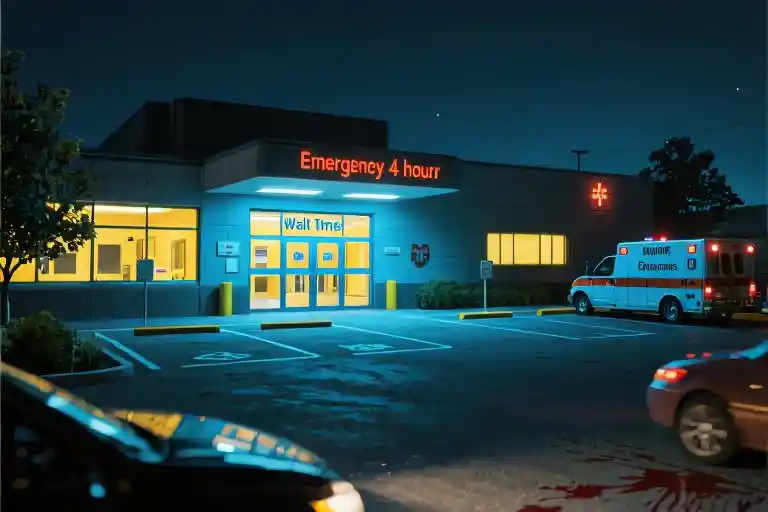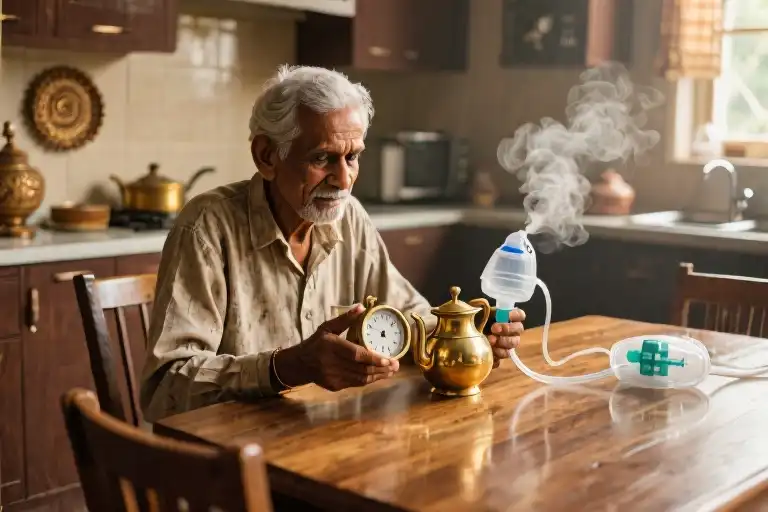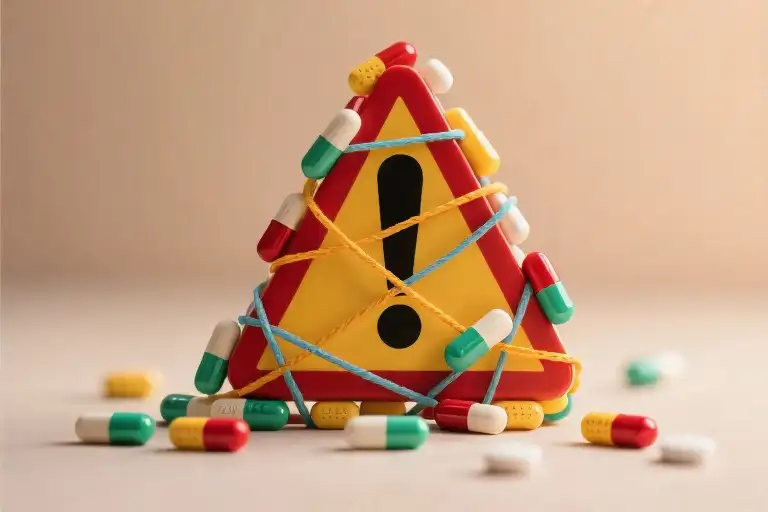The fluorescent lights of the emergency room never sleep, and neither do we – the nurses who’ve seen it all. Between treating heart attacks and stitching up serious wounds, we occasionally encounter patients who make us bite our lips to suppress both laughter and frustration. It’s not that we lack compassion; it’s just that some ER visits defy all medical logic.
Across America, studies suggest nearly one-third of emergency department visits could be handled elsewhere – urgent care clinics, pharmacies, or even at home with basic first aid. This misuse strains an already overburdened system, creating longer waits for true emergencies while exposing patients to unnecessary bills. Yet I understand the panic behind these decisions. When health concerns arise, the line between ‘concerning’ and ‘critical’ often blurs for those without medical training.
Take last Tuesday’s shift: while my team resuscitated a coding patient in Trauma Bay 2, three separate individuals occupied other rooms for complaints including ‘I sneezed twelve times today’ and ‘my cat scratched me – last week.’ The absurdity would be hilarious if it didn’t mean delayed care for the elderly woman having a stroke in our waiting room.
This paradox defines emergency medicine – we must maintain professionalism while gently educating about appropriate ER use. What follows isn’t meant to shame (well, maybe just a little), but to share genuine insights from the frontline. Through real cases that made our staff exchange ‘can you believe this?’ glances, you’ll learn when to head to the hospital versus when to reach for the aloe vera – and possibly spare yourself an embarrassing triage story.
Behind every ‘silly’ ER visit lies a teachable moment about healthcare navigation. My hope? That after reading these stories, you’ll feel empowered to make informed decisions – saving the emergency room for actual emergencies, and saving yourself from becoming our next break room anecdote.
Emergency Room Chronicles: When Common Sense Takes a Sick Day
Emergency departments have become the modern-day equivalent of a Swiss Army knife for health concerns – people show up expecting them to handle everything from heart attacks to hangnails. While no one should feel ashamed for seeking medical help, there are moments when even the most patient ER staff struggle to maintain professional composure.
Take the case of the ‘lobster impersonator’ we admitted last summer. “I’m literally cooking alive!” the college student wailed, presenting with what turned out to be… a moderate sunburn. The kind that makes your skin feel tight and turns you pink for two days. Not the third-degree burns with blistering that actually warrant emergency care. As the triage nurse noted in her chart: “Patient reports using SPF 5 oil before six-hour beach volleyball tournament. Currently more upset about ruined Instagram tan than medical condition.”
Here’s what actually happens during sunburn: UV radiation damages skin cell DNA, triggering inflammation (that redness and warmth you feel). While painful, first-degree burns don’t destroy the deeper skin layers. The real emergencies? When sunburn covers large body areas with blistering, causes fever or confusion (signs of heat stroke), or involves severe dehydration.
For standard sunburns:
- Cool the skin with damp cloths (not ice – that causes further damage)
- Hydrate aggressively – water, electrolyte solutions, even juicy fruits help
- Use fragrance-free aloe vera or pharmacist-recommended hydrocortisone cream
Then there was the ‘assassin’s victim’ – the construction worker who stormed in clutching his index finger. “There’s a wooden splinter in here! I haven’t had a tetanus shot since childhood!” His dramatic reenactment of the injury (involving elaborate conspiracy theories about treated lumber) overshadowed the actual problem: a 2mm visible splinter barely breaking the skin.
Tetanus bacteria thrive in deep, dirty wounds without oxygen – not superficial clean punctures. The CDC considers adults current on vaccinations if they’ve had the Tdap booster within the past decade. For minor splinters:
- Sterilize tweezers with alcohol
- Remove at the same angle it entered
- Apply antibiotic ointment only if the skin breaks
Our third star performer arrived at 3 AM for what he called “a diaphragm mutiny” – twelve hours of hiccups. The resident spent forty minutes trying not to laugh while the patient demonstrated increasingly creative ‘cures’ he’d attempted (including hanging upside down off his couch). The ER’s solution? A paper bag to breathe into and instructions to sip ice water slowly – the same advice his grandmother probably would’ve given.
Persistent hiccups occur when the phrenic nerve gets irritated. While rare cases lasting over 48 hours need medical investigation, most resolve with simple tricks:
- Holding breath while swallowing
- Gargling ice water
- Gentle pressure on the diaphragm (no couch acrobatics required)
These stories aren’t just comic relief – they highlight how easily anxiety overrides reason when health concerns arise. The next time you’re debating an ER visit, ask yourself: “Would my condition improve with rest, hydration, and basic first aid?” If the answer’s yes, you might just save yourself – and overtaxed medical staff – an unnecessary adventure.
Emergency Decision Toolkit
Emergency rooms operate on a simple principle: treat the most critical cases first. But how do you know if your situation qualifies as critical? After years of watching patients second-guess their symptoms (and occasionally witnessing some truly baffling triage choices), I’ve developed this color-coded system to help navigate those gray areas.
Red Flags: When Every Minute Counts
These symptoms demand immediate ER attention – no debate, no waiting:
- Blood where it shouldn’t be: Coughing/vomiting blood, rectal bleeding (especially with dizziness), or any uncontrolled bleeding that soaks through bandages
- Neurological alarms: Sudden confusion, slurred speech, facial drooping, or loss of consciousness
- Crushing pain: Chest pressure radiating to arm/jaw (especially with sweating/nausea), sudden severe headache “like being hit with a bat”
- Trauma with consequences: Major fractures (bone protruding), deep stab/gunshot wounds, head injuries with vomiting/drowsiness
Pro tip: If you’re debating whether something qualifies as “red,” err on the side of caution. That lingering doubt often means you should go.
Yellow Lights: When to Watch and Wait
These situations require medical attention within 24 hours, but don’t necessarily require an ER:
- Fever in vulnerable groups: Children under 3 months (100.4°F+), or anyone with fever persisting 3+ days
- Controlled bleeding: Cuts needing stitches (clean wound, apply pressure first), nosebleeds lasting >20 minutes
- Moderate dehydration: Dry mouth, dizziness when standing, dark urine – but still able to keep some fluids down
- Possible fractures: Swollen, painful limbs without deformity, minor sprains with weight-bearing ability
Better options: Urgent care clinics or next-day doctor visits handle these perfectly. Many hospitals now offer online symptom checkers to help decide.
Green Zone: Home Care Basics
For these common issues, your bathroom cabinet and some patience work better than an ER visit:
- Minor burns/sunburns: Redness without blisters responds well to aloe vera and ibuprofen
- Small cuts: Clean with soap/water, apply antibiotic ointment, bandage for 1-2 days
- Cold/flu symptoms: Rest, fluids, and OTC meds unless breathing difficulties or high fever develop
- Mild allergic reactions: Localized hives/rash improve with antihistamines (watch for throat swelling)
ER secret: Nurses keep a mental “frequent flyer” list. That patient who came in last month for a paper cut? We remember.
The Gray Area Special
Some symptoms straddle categories depending on context:
- Abdominal pain: Green if mild and localized, yellow if persistent, red if accompanied by vomiting blood or rigid abdomen
- Shortness of breath: Green with known anxiety/hay fever, yellow with wheezing, red if lips turn blue
When in doubt, call your primary care provider’s after-hours line – many now offer 24/7 nurse advice services specifically to prevent unnecessary ER trips.
Final thought: ER staff don’t judge genuine concerns, but we do appreciate patients who use the system wisely. Next time you’re unsure, run through this checklist before grabbing your car keys. Your waiting room neighbors (and your wallet) will thank you.
Smart Alternatives to the Emergency Room
The fluorescent lights of an ER waiting room make everything feel more urgent than it actually is. I’ve watched countless patients shuffle in with problems that didn’t require emergency care, their anxiety growing with each minute spent in those plastic chairs. What many don’t realize is that better options often exist just down the street – or even on their smartphones.
Finding Your Nearest Urgent Care Center
Urgent care clinics handle about 89% of what brings people to emergency rooms, often at one-third the cost and one-tenth the wait time. The trick lies in knowing how to locate these gems:
- Insurance portals first – Most providers have search tools showing in-network facilities. That $150 copay might drop to $50 at the right clinic.
- Map apps with filters – Search “urgent care near me” then filter by “open now” and “ratings.” The 24-hour places aren’t always your best bet – a highly-rated daytime clinic may provide superior care.
- Hospital affiliates – Many ERs actually operate adjacent urgent cares with the same physicians rotating through both. Call your local hospital’s main line and ask.
Pro tip: Save two options in your phone contacts – one near home, one near work. When that midday earache strikes, you’ll thank yourself.
When Virtual Care Makes Sense
Telehealth isn’t just for therapy sessions anymore. Modern platforms can handle:
- Medication refills (including controlled substances in many states)
- Rashes and skin evaluations (yes, they can diagnose shingles via your camera)
- Follow-up consultations after ER visits
- Pediatric symptom checks (most platforms have pediatricians available)
The golden rule? If your issue requires hands-on examination (like checking reflexes) or imaging, skip the virtual visit. But for prescription renewals or deciding whether something needs in-person care, it’s often perfect.
Your Local Pharmacist: The Underrated MVP
That friendly face behind the pharmacy counter went to school for six years specifically to advise on:
- Minor wound care (they can recommend better bandages than what’s in your junk drawer)
- Medication interactions (bring all your bottles for a free consult)
- Travel health prep (which malaria pills work best for your destination?)
- Over-the-counter options (that “identical” generic may have different inactive ingredients)
Next time you’re tempted to visit the ER for what might be simple advice, try walking to the pharmacy counter first. You’ll likely leave with solutions, not just another medical bill.
Remember – emergency rooms excel at emergencies. For everything else, smarter options exist that save your time and spare healthcare workers from burnout. The right care in the right place makes the entire system work better for everyone.
Leave the ER for Those Who Truly Need It
After sharing these stories of questionable ER visits, let me leave you with this thought: emergency rooms are for emergencies. That sunburn won’t kill you, but the heart attack patient behind you in line might not have time to wait while nurses apply aloe vera to your shoulders.
We’ve all had moments of medical panic – that midnight Google search convincing us a headache must be brain cancer. But before heading to the ER, ask yourself three questions:
- Is this condition immediately life-threatening?
- Could this wait until morning for an urgent care visit?
- Have I tried basic first aid or over-the-counter solutions?
For those still unsure, we’ve created a simple symptom checklist you can download. It won’t replace professional medical advice, but it might save you six hours of waiting room regret. And if you’ve got your own ‘why did I go to the ER for that?’ story, we’d love to hear it – your experience could help others make better decisions.
Remember: using emergency services appropriately doesn’t just save your time. It keeps resources available for car crash victims, stroke patients, and that kid who actually did swallow a Lego. Now that’s something worth leaving your seat in the waiting room for.





